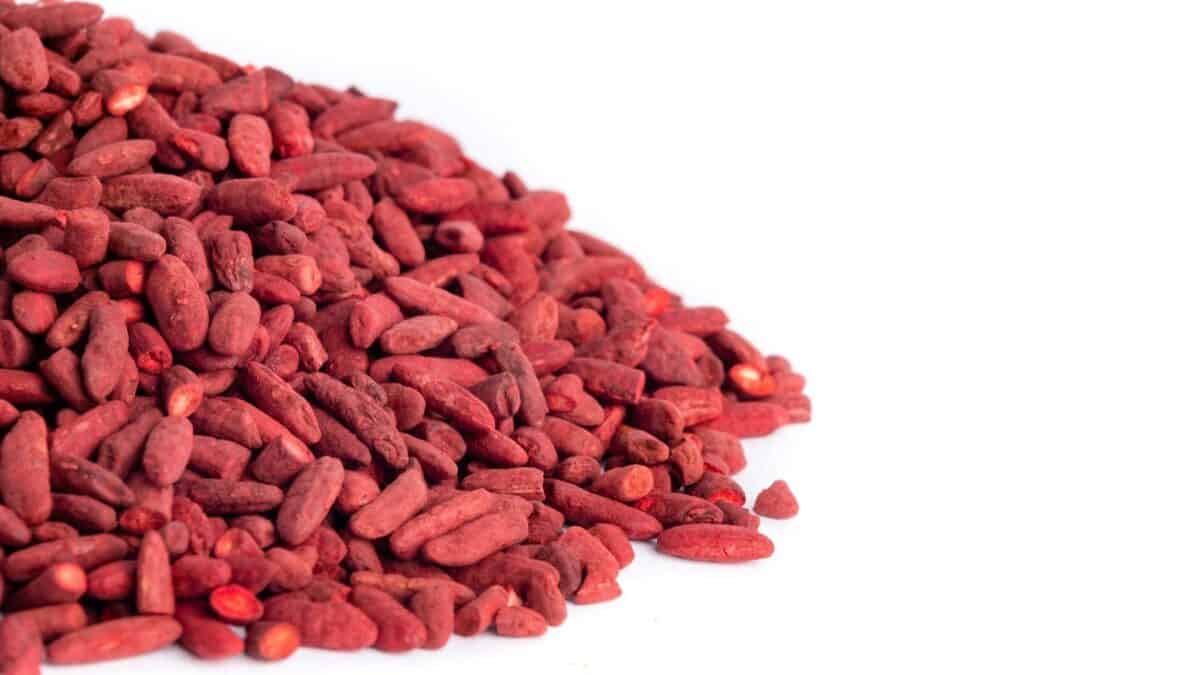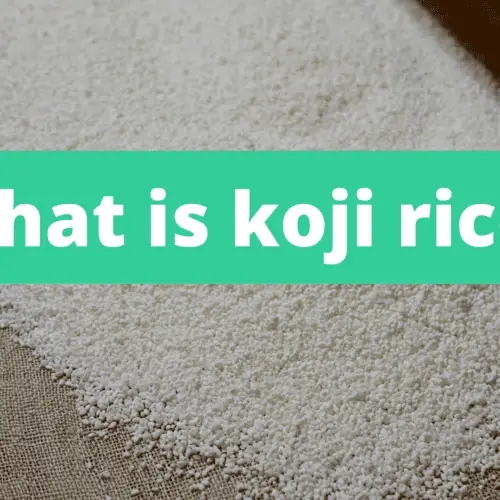How To Make Koji Rice At Home [Full Recipe]
This recipe will give you an understanding of how to grow a wonderful “noble” mold.
Koji can be used for fermenting miso, soybean sauce, amazake, etc. This Japanese ingredient is becoming popular with chefs as it adds some umami flavoring and complexity to cooking techniques.
It can be used with any kind of fermentation imaginable introducing new flavors. Although it is available as a koji plant in stores, you can even produce it yourself in your house.

Koji rice ferments in just 48 hours if the conditions are correct. The good news is you can make koji rice or koji barley at home with fungus spore starter kits.
Finding koji spores is the most challenging element of manufacturing homemade koji (koji-kin). Just make sure you buy the koji-kin rather than koji rice.
Making koji rice or barley is straightforward once you have koji spores in your freezer.
The hardest part of making the koji is the 48-hour incubation in which you have to incubate the koji spores at a steady temperature of 90 F or 30 C for 48 hours.
The temperature cannot fluctuate or else it might not work.
In this post we'll cover:
Koji starter for fermenting proteins
The fermentation process for the protein fermentations (rice, grains, legumes, meat, and so on) requires the koji cultures to produce several types of proteases.
The koji-kin is going to ferment the rice while it incubates.
During fermentation, the enzymes convert proteins to amino acids. Amino acids contribute to the umami flavor of food.
Without a koji starter kit, you can’t make koji rice at home. Check out the Hishiroku Koji Starter Spores.
By the way, I have more options listed in the “where to buy koji rice” section below.


Check out our new cookbook
Bitemybun's family recipes with complete meal planner and recipe guide.
Try it out for free with Kindle Unlimited:
Read for freeKoji rice recipe
Ingredients
- 2 cups of white or brown rice polished
- ¼ teaspoon of the koji-kin culture
Instructions
- To clean the rice completely, rinse it a few times until the water runs clear. The rinsing process removes starch, and this is important if you want the fermentation to work.
- The rice needs to soak in water between 8 to 12 hours or overnight.
- Next, you need to steam the rice until it becomes soft. Do NOT boil the rice. You can use a colander with a sanitized cloth or tea towel to steam it.
- Let the rice cool down to room temperature.
- Add the ¼ teaspoon of the koji-kin culture to the rice and mix it up.
- On a baking dish, spread out all the steamed rice and cover it with a damp cloth. The cloth must be moist but not soaking wet.
- It’s now time to incubate the rice at a constant temperature of 90 F or 30 C for the next 48 hours. Read down below on how to incubate the rice.
- Every 12 hours, break apart the clumps. This distributes the moisture and helps mold development.
- The white mold fibers begin to form after the initial 48 hours. At this point, the rice starts to have a greenish color. If it’s green already, it’s no good!
- Remove the grains from the incubator to prevent mold spring any further. Be sure to remove the towel and let the koji rice dry.
- Place the koji rice in your freezer for later use or start making a recipe with it.
- When you are making the koji rice at home, you only want to use mold powder, so you have to sift it using a fine-mesh strainer.
Video
How to incubate koji rice
You’re wondering ‘How to make a fermentation chamber?’
Only after 12 hours of incubation will you start seeing the koji spores emerge. The fermentation chamber can be the make-or-break component of the process.
But don’t overthink it – it is essential to create a place in which the temperatures and air quality can remain constant.
You can connect the thermostat and humidifier for optimal humidity control. Once the koji starts to smell sweet, and you can gather a fine powder, your koji rice is ready.
There are several ways to incubate the rice, you need a warm place with a steady temperature.
Here are some options:
- Place the koji in a turned-off oven but be sure to leave the oven light on.
- Use a dehydrator and set it to the necessary temperature setting.
- Place it in a slow cooker on low heat.
- You can use a bread proofer or yogurt-making machine.
- A heating mat.
- You can place the rice into an insulated box and add hot water bottles.
- Thermo-circulator or sous-vide cooker.
Koji rice recipe notes
Be sure to use sanitized and clean cooking equipment and tea towels since you’re fermenting mold.
If you are trying to make koji brown rice or koji barley, use the pearled barley and polished brown rice because those work best.
Also, only use certified and reputable brands of koji kin. Contaminated mold can be poisonous and bad for the health.
If your recipe doesn’t work properly and the fungus keeps sporing, it might be due to bad koji kin.
Why did my koji grow poorly?
It could be because the conditions surrounding your koji mold are poor. Generally speaking, incubation temperature can be a problem, unless there is too much heat.
In contrast, when temperatures exceed 35°C (90°F) for too long, this koji mold might deteriorate.
During fermentation, the fermentation process produces new energy. This is why temperatures need monitoring in order to avoid overheating.
Other reasons are moisture. If grains were not dried well, they are insufficiently prepped to grow.
Another issue might be that the spore may be older. You should pick quality spores to inoculate rice.
Why is my koji green or yellow?
If the koji mold persists over time, then it will form green or yellow spores that reproduce themselves. Unfortunately, they cause a bad taste for fermentation.
The green components should be discarded, and the remaining parts used.
When the whole green koji has been discarded in a compost heap, then you can start from the beginning. This sporulated koji cannot be used for rice regeneration in a rice resealable system. Those mutations and infections are at too much risk.
How do I know if my koji is successful?
A successful koji can be white with a fruity scent and flavor similar to apricot. Molding filament creates varying clouds on grains. If your Koji is wet, smells terrible, and turns colorful (green, black, pink, or orange), something has gone bad.
The key to successfully making koji rice is to incubate it in a humid environment at the perfect temperature.
How to store koji rice
You can store koji rice for up to one month in an airtight container in your fridge. If you store it in the freezer, it’s good for up to six months.
So, you don’t have to grow koji all the time but keep in mind that if you freeze koji rice it can lose some of its flavors.
Conclusion
Koji rice can be used to make other great dishes so this recipe is a good one to have in your arsenal.
Check out our new cookbook
Bitemybun's family recipes with complete meal planner and recipe guide.
Try it out for free with Kindle Unlimited:
Read for freeJoost Nusselder, the founder of Bite My Bun is a content marketer, dad and loves trying out new food with Japanese food at the heart of his passion, and together with his team he's been creating in-depth blog articles since 2016 to help loyal readers with recipes and cooking tips.
